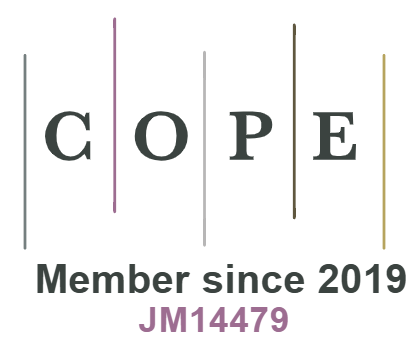Use of physiotherapeutic treatments in spa and wellness centres as a method of health and beauty care
DOI:
https://doi.org/10.18778/0208-600X.58.08Keywords:
health, beauty, physiotherapyAbstract
These days the topics of health and beauty care have become particularly interesting for people. Consequently, health and beauty treatments are becoming increasingly more popular. The aim of this paper is to analyse aspects which make visitors of spa and wellness centres choose a particular offer of physiotherapeutic treatments.
The research was conducted in 2015 among 115 respondents who attended wellness and spa resorts in Eastern Poland. The result were obtained using the diagnostic poll method as well as the author’s tool. Statistical analysis was based on the chi2 test. The level of statistical significance was set at p<0.05.
The main reason why the respondents received physiotherapeutic treatments in wellness and spa resorts was to rest (51,3%), increase their fitness (50,4%) or improve their image (35,6%). Although in most cases they were satisfied with their appearance, they still aimed to improve it (63,5%) by taking massage (60,8%), sauna (52,1%) and hydrotherapy (37,4%) (these were the most frequently chosen treatments), which were considered as effective. The respondents claim that the number of wellness and spa resorts is currently insufficient (57,4%) and that the demand for them will increase along with the growing health and beauty care among the society (68,7%).
Since the current offer of physiotherapeutic treatments available in wellness and spa resorts is chosen by people who care about their appearance and fitness or aim to improve them.
References
Banaszak E., Mosiejczuk H., Cichocki P. (2010), Fizjoterapia i odnowa biologiczna – czy dla wszystkich?, „Roczniki Pomorskiej Akademii Medycznej w Szczecinie”, nr 3, s. 113–114.
Google Scholar
Barański J. (2005), Ciało i zdrowie w ujęciu socjoestetycznym, [w:] W. Piątkowski, W. Brodniak (red.), Zdrowie i choroba. Perspektywa socjologiczna, WSSP w Tyczynie, Tyczyn, s. 323–336.
Google Scholar
CBOS (2009), Polak zadbany – troska o sylwetkę i własne ciało. Komunikat z badań, Warszawa.
Google Scholar
Czapiński J., Panek J. (red.) (2015), Diagnoza społeczna. Warunki i jakość życia Polaków. Raport, Rada Monitoringu Społecznego, Warszawa.
Google Scholar
Eider J. (2001), Aerobik wodny jako najnowsza forma współczesnej gimnastyki zdrowotnej, [w:] I. Murawow (red.), Zdrowie: istota, diagnostyka i strategie zdrowotne, Instytut Technologii Eksploatacji, Radom, s. 365–371.
Google Scholar
Gałuszka M. (2015), Komercjalizacja ciała ludzkiego w społeczeństwie ryzyka biomedycznego, „Acta Universitatis Lodziensis”, Folia Sociologica, nr 55, s. 37–56.
Google Scholar
Kaleta A. (2012), Hotelarstwo Spa i Wellness jako rozwojowy produkt przemysłu czasu wolnego – wybrane aspekty, „Zarządzanie i Finanse. Zeszyty Naukowe”, nr 1/2, s. 361–371.
Google Scholar
Kasprzak W., Mańkowska A. (2010), Fizjoterapia w kosmetologii i medycynie estetycznej, PZWL, Warszawa.
Google Scholar
Kotarski D. (2013), Specyfika popytu restytucyjnego na usługi sanatoryjne, „Zeszyty Naukowe Uniwersytetu Szczecińskiego. Ekonomiczne Problemy Turystyki”, nr 3, s. 33–42.
Google Scholar
Maj A. (2010), Co to znaczy „dbać o siebie” w Polsce, [w:] E. Banaszak, P. Czajkowski (red.), Corpus delicti − rozkoszne ciało. Szkice nie tylko z socjologii ciała, Difin SA, Warszawa, s. 82–104.
Google Scholar
Nowak P. (2012), Motywy zdrowotne w hierarchii wartości kobiet ćwiczących w klubach fitness, „Medycyna Ogólna i Nauki o Zdrowiu”, nr 4, s. 387–392.
Google Scholar
Pasławska B. (2005), Ciało, jako wytwór społeczny. Wybrane perspektywy badawcze, [w:] W. Piątkowski, W. Brodniak (red.), Zdrowie i choroba. Perspektywa socjologiczna, WSSP w Tyczynie, Tyczyn, s. 337–346.
Google Scholar
Pujsza A., Tomczak H. (2012), Position of physiotherapy profession in Poland: perception of physiotherapy student, „Acta Balneologica”, nr 4, s. 267–273.
Google Scholar
Ruciński J. (2015), Ciało „produktem” kultury, czyli o poszukiwaniu własnej cielesności, „Kwartalnik Naukowy”, nr 2, s. 174–181.
Google Scholar
Sallmann N. (2010), Megatrend Wellness & Spa dla rynku usług wolnego czasu i hotelarstwa w XXI wieku, Wydawnictwo PAG, Kraków.
Google Scholar
Sokołowska M., Kosiński S. (red.), (1978), Socjologia zawodów medycznych: wybór problematyki, IFiS PAN, Warszawa.
Google Scholar
Tucki A., Hadzik A. (2013), Raport końcowy z badania dziedzinowego „Analiza możliwości rozwoju turystyki zdrowotnej w województwie lubelskim w kontekście zidentyfikowanej inteligentnej specjalizacji regionu w dziedzinie usług medycznych i prozdrowotnych”, Perfekta Info, Lublin.
Google Scholar
Ustawa z dn.25 września 2015 r o zawodzie fizjoterapeuty, Dz.U., 30.09.2015, poz. 1994.
Google Scholar
Weber-Nowakowska K., Gębska M., Wiatrak A., Skorb K., Dąbrowski K., Żyżniewska-Banaszak E. (2013), Fizjoterapeuta – zawód znany czy nieznany? Wiedza mieszkańców województwa zachodniopomorskiego na temat fizjoterapii. Doniesienia wstępne, „Annales Academiae Medicae Stetinensis. Roczniki Pomorskiej Akademii Medycznej w Szczecinie”, nr 2, s. 138–142.
Google Scholar
Downloads
Published
How to Cite
Issue
Section
License

This work is licensed under a Creative Commons Attribution-NonCommercial-NoDerivatives 4.0 International License.










